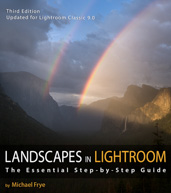In the Moment:
Michael Frye's Landscape Photography Blog
by Michael Frye | Sep 3, 2018 | Travels and Stories, Yosemite Photo Conditions
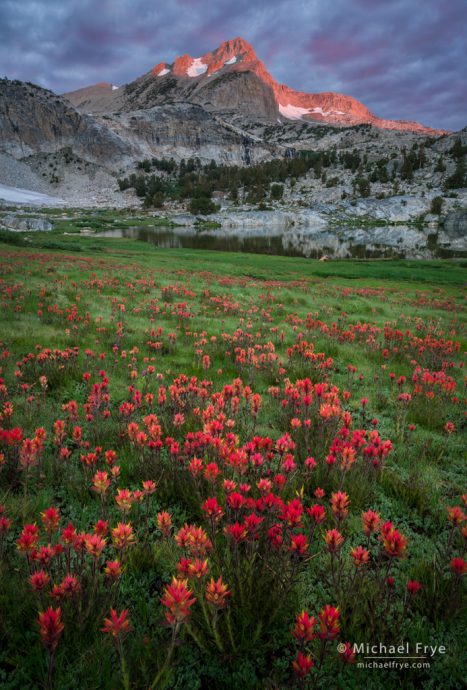
Paintbrush and peak, sunrise, Inyo NF, California. Since the closest flowers were only a foot from the camera, I used focus-stacking to get everything in focus, blending five frames with Helicon Focus. (Exposures were 1.5 seconds at f/16, ISO 100, focal length was 23mm.)
Last winter was a strange one in the Yosemite area, with most of the precipitation coming in March, followed by a big, warm rainstorm in early April that created flooding in Yosemite Valley. That rainstorm melted much of the snowpack below 9,000 feet, so spring came early in those low- and mid-elevation areas. We found some nice flower displays at those elevations, but nothing exceptional.
Above 9,000 feet, however, the snowpack remained intact, even after the early-April flood. And that lingering snow led to an exceptional bloom in the highest elevations. Back in July, before the fires, Claudia and I photographed the flowers as much as we could, and we also led our Range of Light workshop group to a couple of our favorite flower spots.
(more…)
by Michael Frye | Aug 20, 2018 | Uncategorized
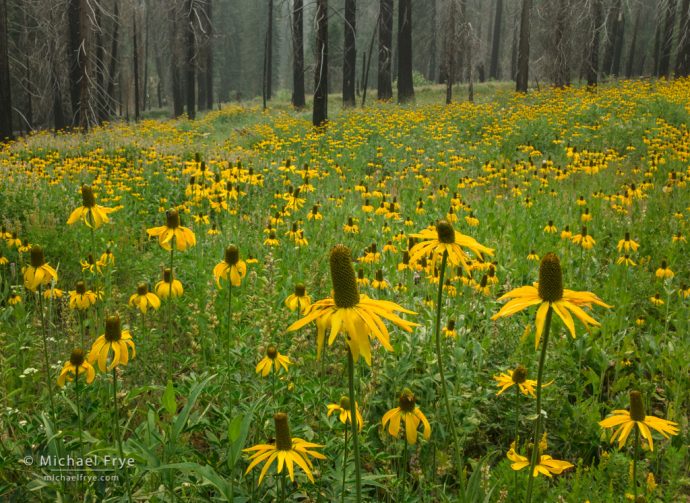
Coneflowers in a forest burned by the Rim Fire, near Crane Flat, Yosemite
The Ferguson Fire, which has been burning on the western edge of Yosemite since July 13th, is now 100% contained. The other major fires in California, like the Mendocino Complex and Carr fires, are still burning, but nearing containment. Skies around the state have become much less smoky over the last week or two.
Tragically, two firefighters died battling the Ferguson Fire, but no homes were lost. We were lucky around here compared to the people in Redding, where the Carr Fire destroyed over 1,000 homes, and eight people lost their lives.
(more…)
by Michael Frye | Jul 22, 2018 | Light and Weather
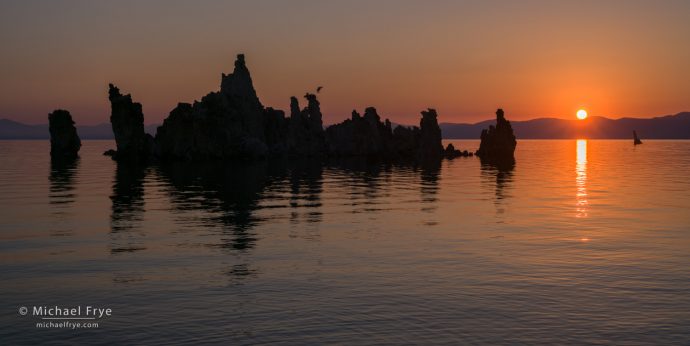
Osprey bringing a fish back to its nest at sunrise, Mono Lake. A thin band of smoke hung on the horizon to the east, turning the sun into a nice orange ball as it crested the horizon. We had watched an osprey bring a fish back to its nest on the tufa towers on a previous morning, so this time I was anticipating it. As the sun rose I heard the adult at the nest calling, so I got ready, setting my shutter speed to 1/350th of a second to freeze motion (at f/8 and ISO 100). The other adult flew in low and fast from the right, then rose up to the nest as I held down the shutter button. The bird is just a small accent at this size, but would be clearly visible in a big print.
Unusual conditions can provide interesting opportunities for photographs. Any unusual conditions – even things we don’t normally think of as photogenic. Photographers typically avoid smoke, for example, but smoke can create some wonderful atmospheric effects.
The Ferguson Fire started on the second day of our recent workshop in the Yosemite high country, but we didn’t see any smoke at first. Then on our fourth afternoon (Sunday the 15th) smoke started pouring over the mountains from the west. Instead of bemoaning our luck, we just went with it, sought out subjects that might work with the conditions, and ended up finding some interesting stuff, especially around sunrise and sunset.
(more…)
by Michael Frye | Jul 5, 2018 | Travels and Stories
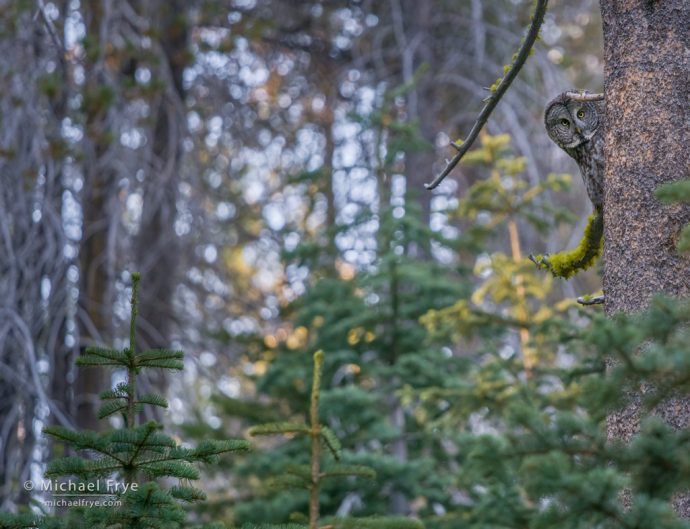
Great gray owl, Yosemite. This was what my first view looked like as the owl as craned its neck around the trunk and stared back at me.
Claudia and I have made several trips to the Yosemite high country recently to photograph flowers. We’ve mostly seen early bloomers like shooting stars, along with a few other species.
One afternoon we made a short hike to one of the high-country meadows looking for flowers. Whenever I’m near meadows in Yosemite between, say, 6,000 and 8,000 feet, I keep my eyes and ears peeled for great gray owls. These are the largest owls in North America, and typically live in boreal forests in Canada and Alaska. But some live in the Cascades and northern Sierra, all the way down to Yosemite, which hosts the southern-most population of these birds.
(more…)
by Michael Frye | Jan 14, 2018 | Advanced Techniques, Night Photography
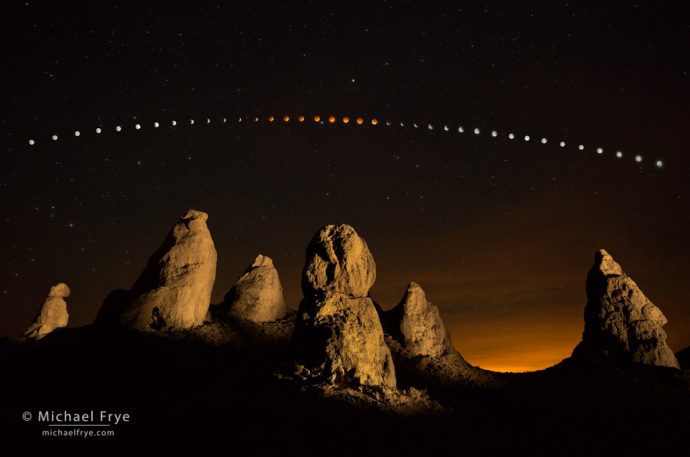
Lunar eclipse sequence, April 14th and 15th, 2014, Trona Pinnacles, CA, USA
In case you haven’t heard, there’s a total lunar eclipse coming up on January 31st. The total eclipse will be visible in central and western North America, Australia, and much of Asia. It will also be a “blue moon,” (the second full moon of the month), and a “supermoon,” (with the moon closer to the earth than normal, so it will look slightly larger). This page shows where the eclipse will be visible, as well as the timing of the event.
In North America the eclipse will occur as the moon is setting in the west just before sunrise. The further west you go, the higher the moon will be during totality, and the longer the eclipse sequence you can see. People in the mountain states should be able to see the entire one hour and sixteen minutes of totality, while those of you in the northwest could see (with clear skies) all of totality plus all of the partial eclipse phase afterwards. Unfortunately, the total eclipse will not be visible on the east coast of the U.S. and Canada.
(more…)












